Discover 15 hidden attractions, cool sights, and unusual things to do in Park City (United States). Don't miss out on these must-see attractions: Park City Mountain Resort, Utah Olympic Park, and Egyptian Theatre. Also, be sure to include Franz the Bear in your itinerary.
Below, you can find the list of the most amazing places you should visit in Park City (Utah).
Table of Contents
Park City Mountain Resort
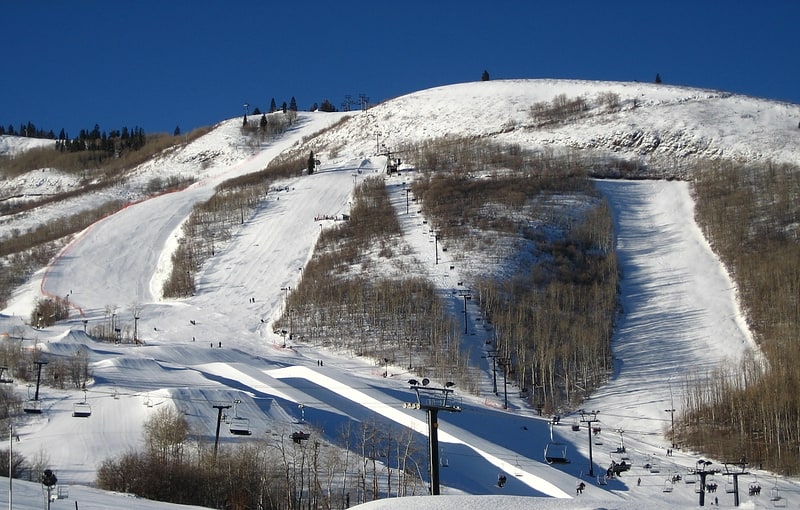
Ski resort in Park City, Utah. Park City Mountain Resort is a ski resort in the western United States in Park City, Utah, located 32 miles east of Salt Lake City. Park City, as the ski resort and area is known, contains several training courses for the U.S. Ski Team, including slalom and giant slalom runs. During the 2002 Winter Olympics, it hosted the snowboarding events and the men's and women's alpine giant slalom events.
Opened 59 years ago in 1963, the resort has been a major tourist attraction for skiers from all over the United States, as well as a main employer for many of Park City's citizens. The resort was purchased by Vail Resorts in 2014 and combined the resort with neighboring Canyons Resort via an interconnect gondola to create the largest lift-served ski resort in the United States.
During the ski season, most slopes and lifts are open from 9:00 a.m. to 4:00 p.m.[1]
Address: 1345 Lowell Ave, 84060-5115 Park City
Utah Olympic Park
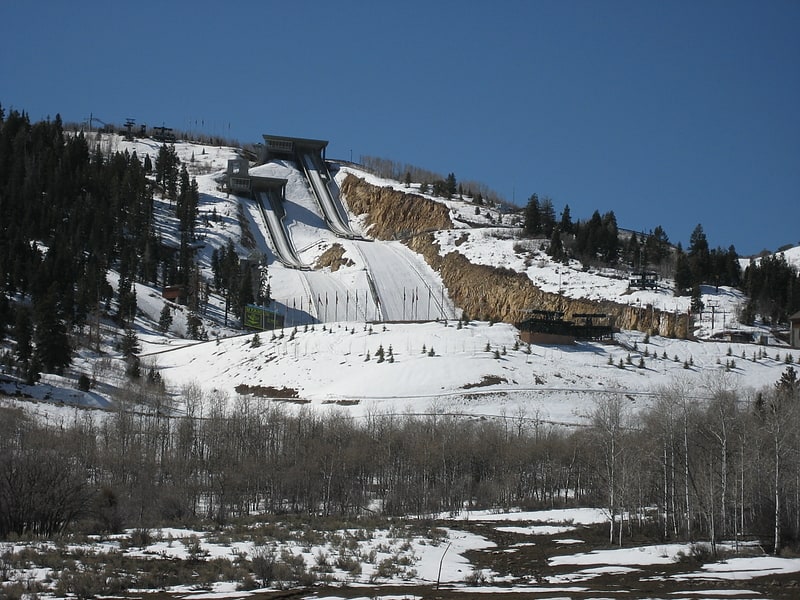
Sports venue built for the 2002 Olympics. The Utah Olympic Park is a winter sports park built for the 2002 Winter Olympics, and is located in Summit County northwest of Park City, Utah, United States. During the 2002 games the park hosted the bobsleigh, skeleton, luge, ski jumping, and Nordic combined events. It still serves a training center for Olympic and development level athletes.[2]
Address: 3419 Olympic Pkwy, 84098 Park City
Egyptian Theatre

The Egyptian Theatre is located at 328 Main Street in Park City, Utah in the United States. It has also been referred to as the Mary J. Steiner Egyptian Theatre or Egyptian Theatre in Park City.[3]
Address: 328 Main St, 84060-5223 Park City
Franz the Bear
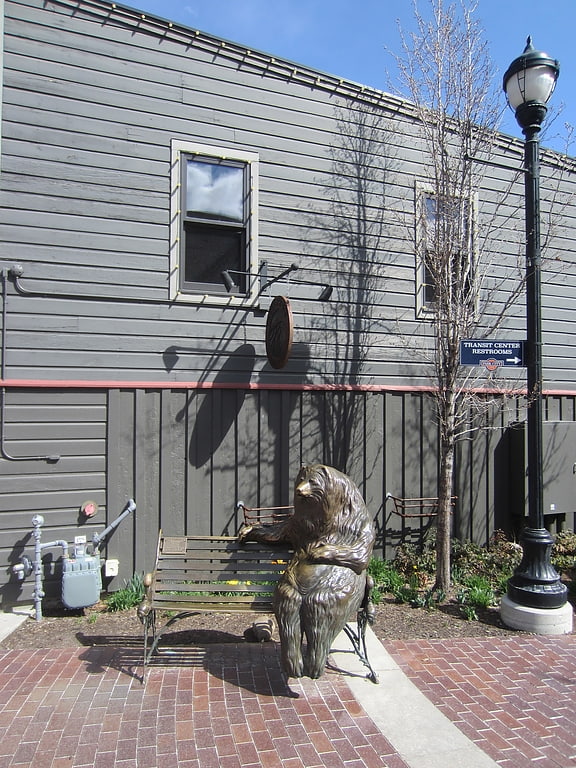
Franz the Bear is a statue of a bear on a bench by Michele vandenHeuvel, installed in Park City, Utah, United States.[4]
Loosey the Moose
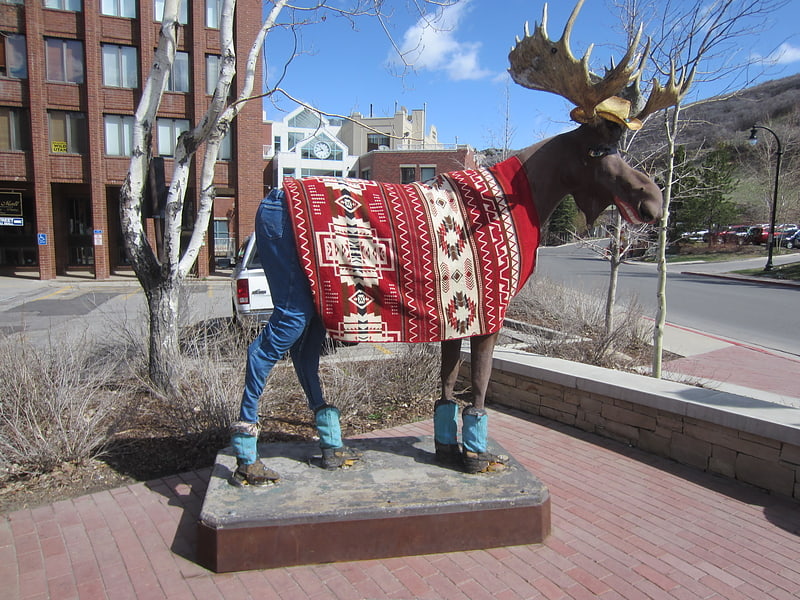
Loosey the Moose is a sculpture of a moose in Park City, Utah, United States.[5]
Park City Museum

Museum, History museum
Address: 528 Main St, 84060-5153 Park City
Glenwood Cemetery
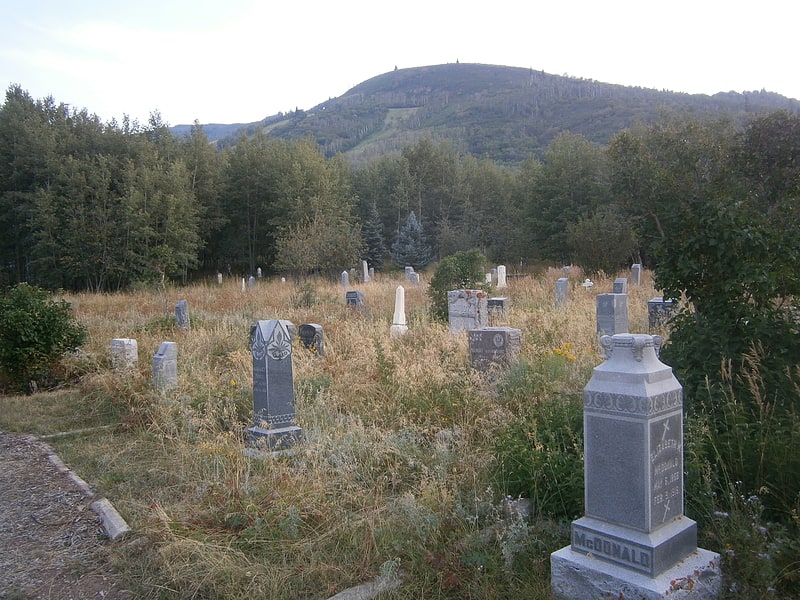
Cemetery in Park City, Utah. Glenwood Cemetery is a 5-acre cemetery in Park City, Utah. The site was first established in 1885 as a pioneer cemetery by silver miners. It is still in use, and has over 950 interments. It is on the National Register of Historic Places.[6]
Meyer Gallery
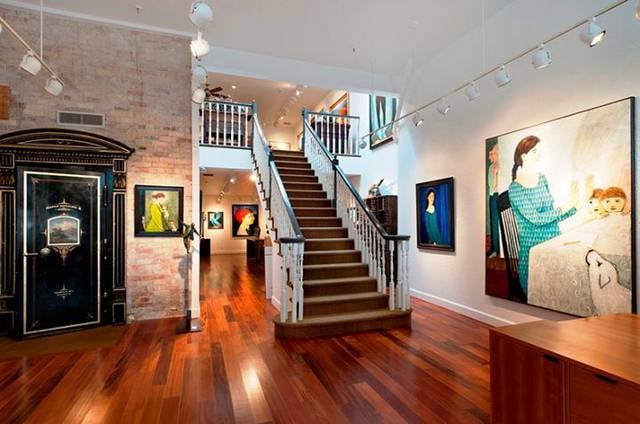
Museum, Shopping, Art gallery
Address: 305 Main St, 84060-5223 Park City
Swaner EcoCenter
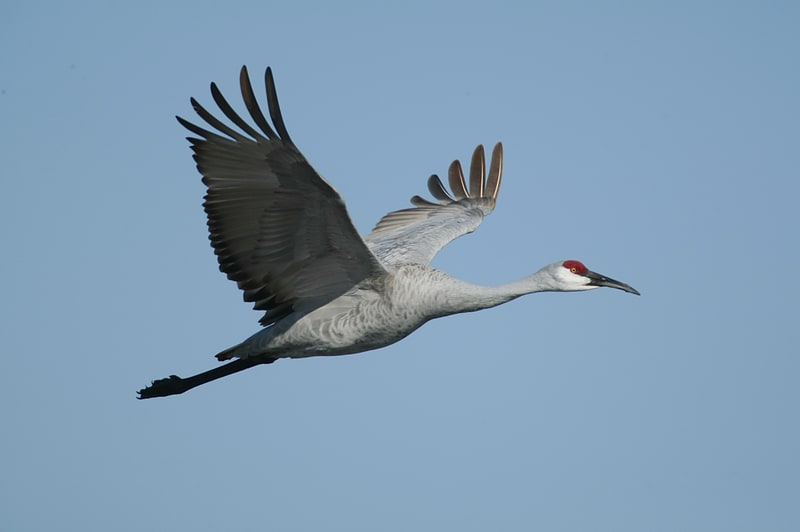
Nature preserve in South Snyderville Basin, Utah. The Swaner EcoCenter is a nature preserve and Utah State University Distance Education site located in Snyderville Basin near Park City, Utah. Swaner encompasses a 1,200-acre wildlife refuge, a 10,000-square-foot state of the art environmental education facility, a 100-acre farm, and 10 miles of trails. The EcoCenter works to preserve the land and the human connection to the natural landscape, to educate the local and broader communities about the value of nature, and to nurture both the ecosystem and the people connected with it. The EcoCenter was designed by architect Soren Simonsen to meet the Leadership in Energy and Environmental Design platinum certification, the highest standard set by the U.S. Green Building Council.[7]
Address: 1258 Center Dr, 84098-7653 Park City
Gorgoza Park
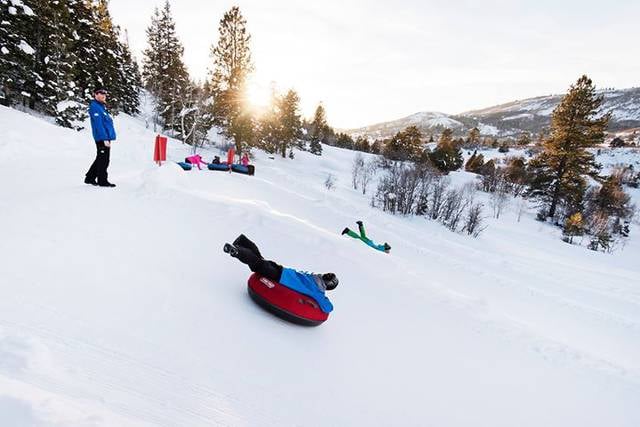
Theme park, Park, Amusement park, Ski area, Relax in park
Address: 3863 Kilby Rd, 84098-5301 Park City
Reese Williams House
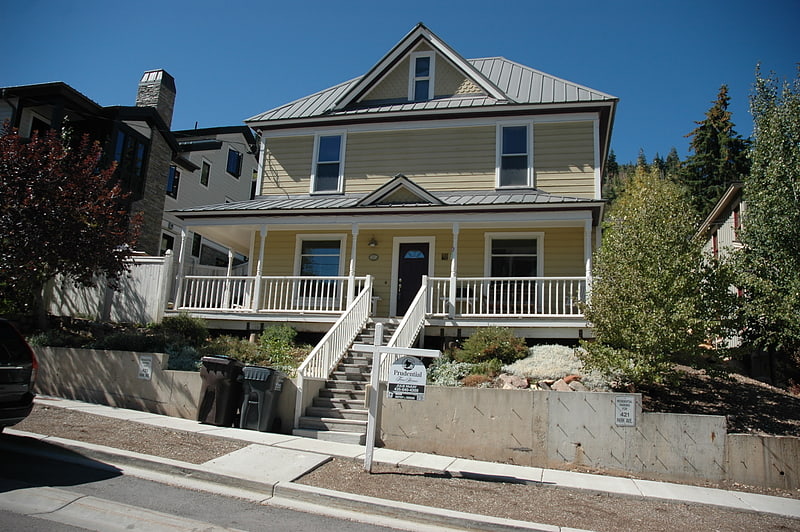
The Reese Williams House, at 421 Park Ave. in Park City, Utah, was built in 1898. It was listed on the National Register of Historic Places in 1984.
It is a two-story frame "box house", with a truncated hip roof having dormers on east and south sides. It was built as a house for Reese Williams by carpenter Ellsworth J. Beggs. Williams, born in 1851 in Wales, worked at the Silver King Mine, and died in 1898 just three days after this house was completed; his widow and children lived here for only one year.
In 1984 it was deemed "architecturally significant as one of four extant two story box houses in Park City, three of which are well preserved and included in this nomination. The two story box is closely tied with the pyramid house, one of three major house types in Park City. Like the pyramid house, it has a square or nearly square form, a pyramid or truncated hip roof, and a porch spanning the facade. It varies in size from the pyramid house, being a full two stories, as compared with the one or one and one half stories of the pyramid house. The two story box was not common in Park city, but judging from the range of extant buildings in Park City, it seems to have been the preferred design choice for a sizeable Park City house. All of the extant examples of this house are located on prominent sites along Park Avenue, the most prestigious street in Park City, further documenting the significance of this house type as one chosen by those who were seeking more than a utilitarian dwelling. This house is also historically significant as the first hospital in Park City. It served the community from 1900 until at least 1904, when the large Miners Hospital was constructed."
It was leased in early 1900 to T.H. Monahan and E.H. Howard who set up the Park City Hospital. The hospital had an operating room and electric lights. Monahan was a surgeon; Howard was manager of the hospital. The Williams family continued to own the building after the hospital closed, eventually selling it in 1925 to Henry Thomas, and it was then owned by the Thomas family for many years.[8]
House at 343 Park Avenue
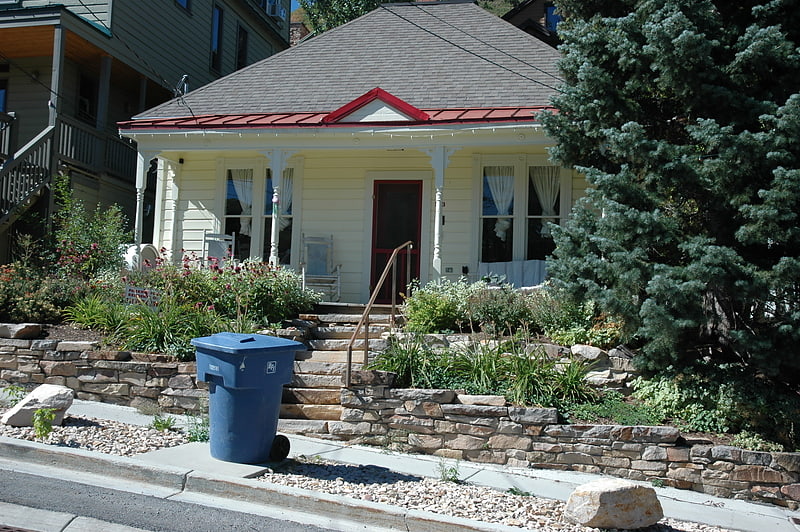
The House at 343 Park Avenue, at 343 Park Ave. in Park City, Utah, was built in 1898. It was listed on the National Register of Historic Places in 1984.
It is a one-story frame pyramid house with a truncated hip roof. It has a square plan and a "generally symmetrical facade with the door set slightly off center between pairs of double hung sash one over one light windows, the truncated hip roof, and the porch supported on lathe turned piers that spans the facade." Its windows have a common type of Victorian molding, with grooves and decorative corner blocks. A rear shed extension on the northwest corner of the building may have been part of the original construction, and even if it were added later it would contribute to the historic significance of the house as documenting "the most common and acceptable method of expansion of the small Park City house." As of 1984 the house had received "no major alterations and is in excellent condition. It maintains its original integrity."[9]
Nicholas Rowe House

The Nicholas Rowe House, at 150 Main St. in Park City, Utah, was built around 1885. It was listed on the National Register of Historic Places in 1984.
It was built as a hall and parlor plan house but later (probably between 1907 and 1910) was converted to a two-story commercial building, with the second floor projecting forward, supported by front porch pillars.
In 1984 it was deemed:
significant as one of three extant buildings in Park City which document the method of expanding a small mining town cottage by adding a full second story to an existing hall and parlor house. The addition of a shed extension to the rear of a house or a cross-wing to one end of a hall and parlor house were the preferred methods of expanding Park City's tiny houses. Because there are only three extant examples of houses that were expanded by the addition of a second story, it is likely that this type of expansion may have been more difficult to do, and therefore was less popular. All three houses were originally one story residences. Two of the three houses were changed to two story residences with gable roofs typical of hall and parlor houses. The flat roof of the addition on this house gives it the appearance of a commercial building. This is the only extant example in Park City of a building that was converted from a residence to a commercial building.
Its first known owner was Nicholas Rowe, who with his wife Carrie sold the house in 1909. Nicholas (Nick) Rowe was born in 1850 in England in 1850 and immigrated in 1869. In Park City, he worked as a miner. Carrie Rowe, born in England c.1866, immigrated in 1887. They married less than a year later.[10]
Alfred Lindorff House
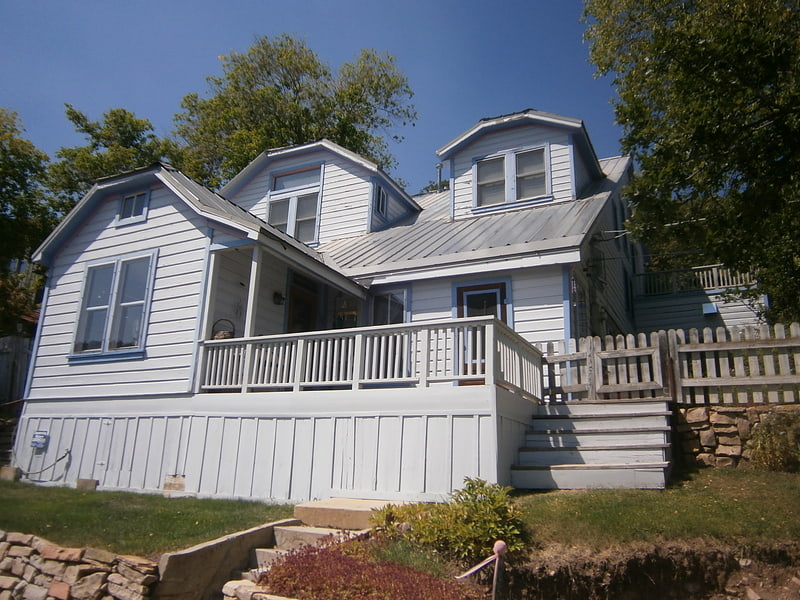
The Alfred Lindorff House, at 40 Sampson Ave. in Park City, Utah, was built around 1885. It was listed on the National Register of Historic Places in 1984.
It was deemed "architecturally significant as one of two well preserved examples of a Park City house with a distinct L-plan by addition. This type of addition does not appear to have been common in Park City building, and less than five examples of the type are extant. As opposed to the T/L cottage and the T/L cottage by addition, which viewed from the facade have relatively short cross-wings and longer stem-wings, the L-plan by addition house has a distinctive L-plan consisting of two wings of almost equal length that intersect at right angles. A difference in the window types of the two wings indicates that this house was not built with an original L-plan, but instead is the result of the expansion of a small house by the addition of a cross-wing to the front of one end of the original facade. Although an uncommon type, the L-plan by addition is significant because it is a variant of the common modification of adding a cross-wing to an existing house as a solution to the problem of inadequate space in the tiny mining town cottage."
It was probably the home of Alfred Lindorff, who was born in Denmark in 1863 and immigrated with his wife Mary in 1890.[11]
Park City High School Mechanical Arts Building

The Park City High School Mechanical Arts Building, at 1167 Woodside in Park City, Utah, was built in 1935–36. It was listed on the National Register of Historic Places in 1996.
It is Moderne in style.
It was built as a Works Project Administration project.
There are currently five mechanical arts buildings listed on the National Register in Utah. The other four are:
- Morgan High School Mechanical Arts Building (1936), Morgan, Utah
- Moroni High School Mechanical Arts Building (1935-36), Moroni, Utah
- Mount Pleasant High School Mechanical Arts Building (1935-36), Mount Pleasant, Utah
- Springville High School Mechanical Arts Building (1929), Springville, Utah